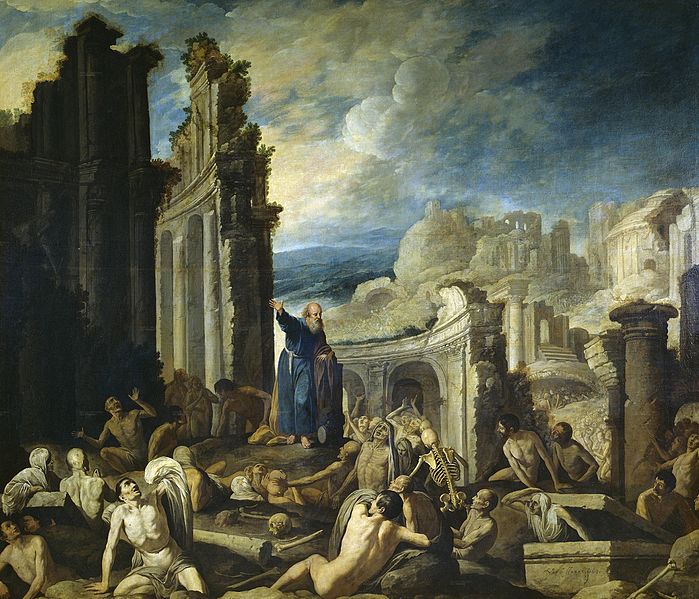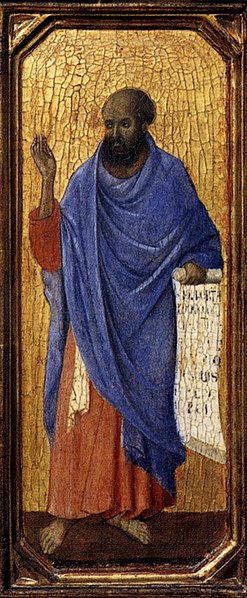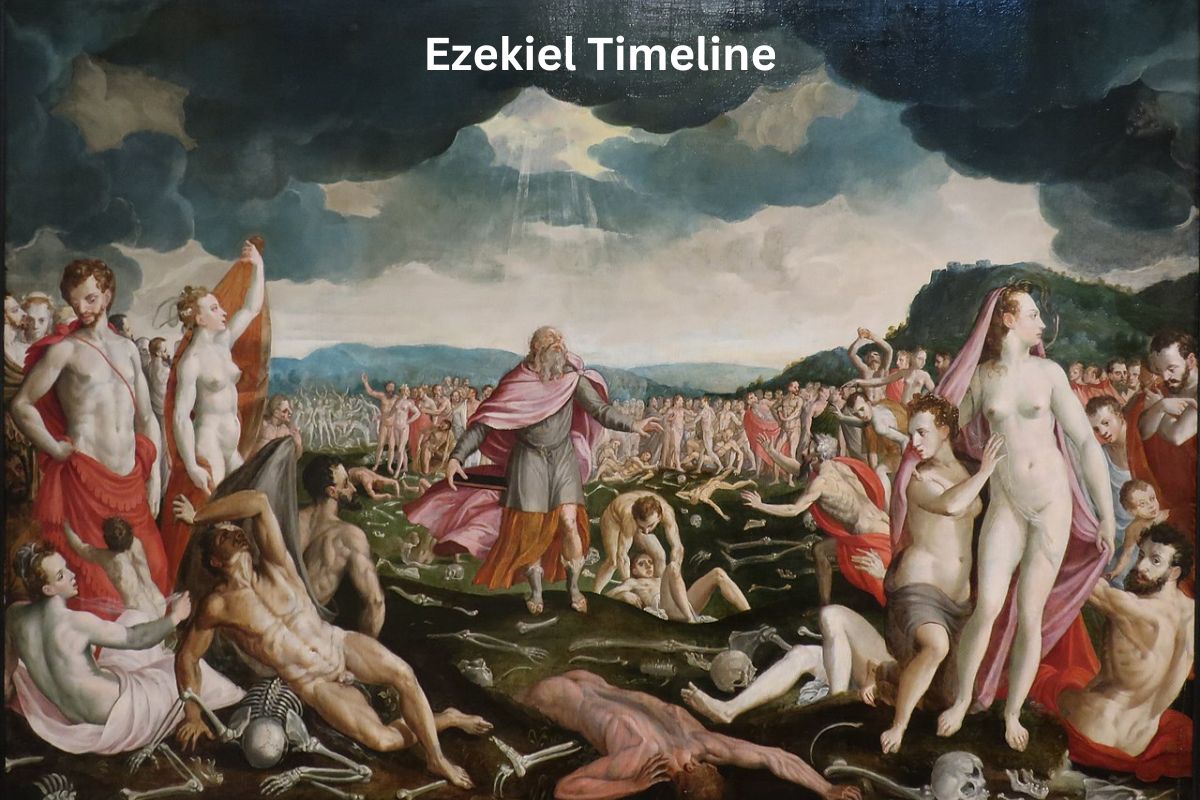Ezekiel, a prominent figure in the Hebrew Bible (Old Testament), lived during the tumultuous period of the Babylonian Exile in the 6th century BCE.
Born in Jerusalem, he was a priest’s son who, at a young age, was among the thousands of Judeans deported to Babylon following the conquest of Jerusalem by Nebuchadnezzar in 597 BCE.
Ezekiel’s life took a profound turn when he received a divine call to prophethood, marking the beginning of his ministry as a prophet and watchman for the people of Israel.
Over several years, he delivered messages of judgment, restoration, and hope, often through powerful visions and symbolic actions. His prophecies, recorded in the Book of Ezekiel, offer valuable insights into the spiritual and historical landscape of his time.
| Event | Date | Details |
|---|---|---|
| Birth and Early Life | Around 622 BCE | Ezekiel was born in Jerusalem and was a priest’s son. |
| Babylonian Exile | 597 BCE | Jerusalem was captured by Nebuchadnezzar, and Ezekiel was taken to Babylon. |
| Call to Prophethood | Around 593-592 BCE | Ezekiel received his prophetic call and began his ministry as a watchman for Israel. |
| Prophecies and Visions | 593-571 BCE | Ezekiel delivered messages of judgment and prophecy, including visions and symbolic actions. |
| Symbolic Actions | Various | Ezekiel used symbolic actions to convey his messages, such as lying on his side. |
| Death | Around 571 BCE | The exact date of Ezekiel’s death is not recorded in the Bible. |
Timeline of Ezekiel in the Bible
Birth and Early Life:
Ezekiel’s birth and upbringing provide important context for understanding the life and ministry of this significant biblical figure. Born around 622 BCE in the city of Jerusalem, Ezekiel hailed from a priestly lineage, being the son of Buzi.
As a member of a priestly family, he likely received a comprehensive education in religious practices and traditions. This upbringing equipped him with a deep understanding of the rituals and customs of the Jewish faith.
Also Read: Facts About Ezekiel in the Bible
Little is known about his early years in Jerusalem, but his life took a dramatic turn when Jerusalem fell to the Babylonians in 597 BCE.
This pivotal event marked the beginning of the Babylonian Exile, during which Ezekiel, along with many fellow Judeans, was taken into captivity in Babylon.
This displacement not only shaped his destiny but also set the stage for his prophetic calling and ministry, which would become instrumental in the religious history of ancient Israel.

Babylonian Exile:
The Babylonian Exile, also known as the Babylonian Captivity, was a significant event in the history of ancient Israel that had a profound impact on the Jewish people, their faith, and their relationship with God.
Also Read: Isaiah Facts
It began in 597 BCE when the Babylonian King Nebuchadnezzar II besieged and conquered the city of Jerusalem.
Key details about the Babylonian Exile include:
- Conquest of Jerusalem (597 BCE): The Babylonian King Nebuchadnezzar’s army captured Jerusalem, leading to the exile of a considerable portion of the city’s population. This event is sometimes referred to as the First Babylonian Exile.
- Deportation to Babylon: Many Judeans, including Ezekiel, were forcibly deported from Jerusalem to Babylon. This relocation was part of the Babylonian policy to weaken conquered territories by removing their inhabitants and resettling them in Babylon.
- Duration: The Babylonian Exile lasted for approximately 70 years, with its endpoint marked by the return of the exiled Jews to their homeland following the Persian conquest of Babylon in 539 BCE.
- Impact on Judaism: The exile had a profound impact on Jewish identity and faith. During this period, the exiles faced challenges in maintaining their religious practices and cultural traditions in a foreign land. Synagogues, a precursor to modern Jewish places of worship, began to emerge as community centers for prayer, study, and communal gatherings.
- Prophetic Voices: It was during the Babylonian Exile that several prominent biblical prophets, including Ezekiel, Daniel, and Jeremiah, delivered their messages of hope, judgment, and restoration to the exiled Jewish community. Ezekiel’s prophecies, in particular, provided spiritual guidance and a sense of purpose during this challenging period.
- Return to Jerusalem: Following the conquest of Babylon by the Persian Empire under Cyrus the Great, the Jews were granted permission to return to their homeland. The returnees, led by figures like Ezra and Nehemiah, began the process of rebuilding Jerusalem and its temple.
The Babylonian Exile is a pivotal event in Jewish history, shaping the development of Judaism and influencing the theological concepts of exile, redemption, and the covenant between God and the Jewish people.
It is also a central theme in the prophetic writings of the Old Testament, highlighting the importance of faith, repentance, and hope even in times of adversity.

Call to Prophethood:
Ezekiel’s call to prophethood marked a significant turning point in his life and was a pivotal moment in the history of ancient Israel.
It is a central theme in the Book of Ezekiel and provides insight into the divine commission that shaped his ministry.
Key details about Ezekiel’s call to prophethood include:
- Divine Encounter (Around 593-592 BCE): Ezekiel received his call to prophethood in the “thirtieth year” of his life, which scholars generally estimate to be around 593 or 592 BCE. This date is derived from Ezekiel 1:1, where he mentions his age at the time of his call.
- Vision of God’s Glory: Ezekiel’s prophetic calling began with a powerful and awe-inspiring vision of God’s glory. This vision is described in the opening chapters of the Book of Ezekiel and includes the famous image of God’s throne chariot, often referred to as the “Merkebah” vision. In this encounter, Ezekiel witnessed the majesty and holiness of God, an experience that deeply impacted him.
- Commission as a Watchman: In the midst of this profound vision, God commissioned Ezekiel to be a watchman for the house of Israel (Ezekiel 3:16-21). As a watchman, his role was to warn the people of Israel about their sins, call them to repentance, and convey God’s messages and judgments to them.
- Symbolic Actions: Ezekiel’s prophetic ministry was marked by the use of symbolic actions to convey his messages effectively. These actions often involved dramatic and unconventional behavior that served as visual representations of the impending judgment and the consequences of Israel’s disobedience.
- Scroll Eating: One notable symbolic action involved eating a scroll containing God’s words. This act symbolized Ezekiel internalizing God’s message and becoming a living embodiment of God’s Word (Ezekiel 3:1-3).
- Impact and Obedience: Ezekiel responded obediently to God’s call and embarked on his prophetic mission. His messages emphasized the importance of repentance, faithfulness to God’s covenant, and the consequences of sin. Despite facing resistance and opposition from some members of the exiled community, he remained faithful to his divine commission.

Prophecies and Visions (593-571 BCE):
Ezekiel’s prophetic ministry spanned several years, from around 593 BCE to 571 BCE.
During this time, he received a series of visions and delivered prophetic messages, which are recorded in the Book of Ezekiel in the Bible.
Some key themes and messages from Ezekiel’s prophetic ministry include:
- Judgment: Ezekiel often conveyed messages of judgment from God against the people of Israel and Judah. He emphasized that their sins and unfaithfulness to God had brought about divine judgment and the exile to Babylon.
- Restoration: Alongside the messages of judgment, Ezekiel also delivered messages of hope and restoration. He prophesied that, in the future, God would bring the exiles back to the land of Israel and renew His covenant with them.
- Temple Visions: Ezekiel had several visions of a future restored temple in Jerusalem, with detailed descriptions of its design and rituals. These visions are significant for Jewish eschatology and understanding of the temple’s spiritual significance.
Symbolic Actions (Various):
Throughout his prophetic ministry, Ezekiel engaged in various symbolic actions as directed by God to convey his messages effectively. These actions were often unusual and served as visual aids for his prophecies.
One notable example is Ezekiel’s symbolic act of lying on his side for a specific number of days to represent the sins of Israel and Judah (Ezekiel 4:1-17).
He also shaved his head and beard as a sign of the impending judgment and exile (Ezekiel 5:1-17).
These symbolic actions helped illustrate the consequences of disobedience and the severity of God’s judgments.
Death (Around 571 BCE):
While the Bible does not provide an exact date for Ezekiel’s death, it is believed to have occurred around 571 BCE, based on the estimated timeline of his life and ministry.
Ezekiel’s prophetic ministry had a lasting impact, and his messages continued to influence Jewish thought and theology for generations to come.
His writings, preserved in the Book of Ezekiel, remain a significant part of the Hebrew Bible (Old Testament) and continue to be studied and revered by religious scholars and theologians.
